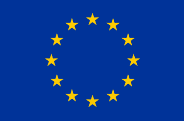
Safe non-food consumer Products in the EU and China
A toy is defined as a product which is designed or intended, whether exclusively or not, for use in play by children under 14 years of age. There are some specific exemptions from this definition:
There are further exemptions not listed here, but available in the Toy Safety Directive.
The question for Market Surveillance officials is always whether or not the product has been designed to have ‘play value’ which means that it appeals to children and is likely to be used in play by them.
The EU recognises the existence of ‘grey areas’ for the classification of products as toys. The Toy Safety Directive presents a non-exhaustive list of examples that are not considered as toys but that could be subject to confusion e.g. fireworks, sports equipment, puzzles with more than 500 pieces.
Anything which is neither designed and manufactured as a toy or is not suitable for use in play while being specifically child appealing is not considered a toy.
Choking on small parts of toys is only usually considered to be a significant issue for very young children, particularly those under three years old. This is because at this age they are still putting things in their mouths, and so small parts of toys may be used in this way and present a risk of choking.
The European requirements for toys safety strictly control the presence of small parts on toys designed or intended for children under the age of three, and if the toy may be attractive to this age group but is not suitable for them then it must have a warning saying that the product is unsuitable for children under three because of the presence of small parts which may present a choking hazard.
Toys must be assessed for the presence of small parts at the design stage of conformity assessment, and also during the toy safety assessment. Checks can be carried out on toys which are considered suitable for children under three years by determining whether it has any detachable parts which may fit inside a child’s mouth. If the parts are removeable using as much force as a child is likely to be able to exert, and it could fit inside a child’s mouth, then there is a cause for concern.
The technical requirements for this pull test, and the size of the part which may cause harm, are clearly defined in the harmonized standard EN 71 on toy safety.
The manufacturer is either the maker of the product, or the person who has the product made and applies their name or trademark to it for the European market.
This means that a factory in China may not actually be the manufacturer if the person who has the product made, owns the brand and creates the specification is based within the EU.
Toys must carry the CE mark in the correct form (subject to some minor exceptions relating to size) which is at least 5mm high but must also be labelled with the following:
Any warning which may determine the decision to buy a toy (for example age warnings).
Any product which is intended or designed for use in play by people under the age of fourteen years is legally defined as a toy, and as such must meet the safety and conformity assessment requirements set out in the Toys Safety Directive.
Children under 3 are considered to be vulnerable consumers and therefore very specific safety requirements are applied to products intended for them. Children between the ages of 3 and 14 are considered to be vulnerable consumers, and so there are still enhanced safety requirements for products intended for them, but they are not as strict as those for products for younger children.
Specific hazards which are addressed for very young children include those which arise from putting the product in the mouth and not being able to recognize when a toy has become unsafe because it is broken. Toys for older children will still be subject to unpredictable behaviour and so must not present any hazards which could cause injury to children during foreseeable play.
User limitations must contain at least the minimum or maximum age of the user.

This website was created and maintained with the financial support of the European Union. Its contents are the sole responsibility of SPEAC project and do not necessarily reflect the views of the European Union.